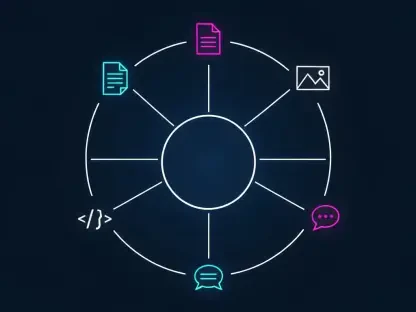Software development today confronts an increasingly fragmented landscape due to the proliferation of varied operational practices like DevOps, DevSecOps, and MLOps. Each methodology serves distinct purposes, yet their overlapping functionalities often lead to inefficiencies and communication barriers. Within this complex framework, EveryOps emerges as a revolutionary approach aimed at unifying these practices into a cohesive methodology. Its objective is to promote efficiency and enhance collaboration while addressing the inherent complexities faced by modern software development teams. By integrating these disparate elements, EveryOps seeks to streamline operational processes, fostering a culture of trust and seamless cooperation within organizations.
Addressing Fragmented Development
Complexity in Operational Practices
As technology advances, operational practices such as DevOps, DevSecOps, and MLOps are increasingly converging. DevOps fundamentally bridges the gap between software development and operations, facilitating collaboration for faster deployment cycles. DevSecOps evolves this approach by embedding security into the development process, ensuring robust protection against vulnerabilities. MLOps focuses on operationalizing machine learning models, integrating data science with infrastructure and development workflows. Despite their specific objectives, traditional linear software development approaches are ill-suited to handle these non-linear, intertwined aspects. Introducing AI and sophisticated application frameworks further heightens this complexity, rendering standalone methodologies impractical. EveryOps aims to address these challenges by proposing an integrated approach that accommodates the non-linear nature of the modern software landscape.
Tool Fragmentation Challenges
The dynamic market for development tools presents another layer of complexity due to its fragmented nature. While some companies succeed in adopting a streamlined supply-chain-like integration of tools, many grapple with redundancies and conflicting functionalities, exacerbated by acquisitions and evolving strategies. New startups continuously emerge, promising innovation yet often contributing to disorder with overlapping tool capabilities. EveryOps offers a cohesive framework to assimilate these varied challenges, providing a structured process that harmonizes tool integration. By converging operational practices into a unified methodology, organizations can navigate this chaotic environment more effectively, reducing inefficiencies and establishing a robust system of development that enhances productivity and facilitates innovation.
The Trusted Software Factory
Building Trust and Security
Central to EveryOps is the concept of a “trusted software factory,” which embodies systematic production of secure software akin to components within a secure supply chain. Acknowledging the importance of trust and security, EveryOps prioritizes rigorous inspections and compliance with policies, ensuring consistent output of reliable software. This approach serves various stakeholders, including compliance officers and auditors, who rely on transparent and secure processes to evaluate software integrity. Organizations thus reflect a credible and secure software production environment, bolstering internal and external confidence in their software offerings. By adopting EveryOps, firms can demonstrate a commitment to security assurance, meeting stakeholder expectations while simultaneously enhancing operational efficiency.
Inclusive Operational Practices
EveryOps extends beyond prevailing practices, aspiring to encompass a comprehensive range of software components and runtime environments, from IoT devices to machine learning applications. While IoT and electric vehicle software remain nascent domains, as they mature, security considerations akin to established software components will become crucial. Emphasizing automation, robust policies, and well-defined pipelines, EveryOps maintains control over the entire software development lifecycle. The method prioritizes transparency and reliability, empowering developers and engineers to deliver secure and effective software solutions across various platforms. EveryOps aims to bridge gaps between disparate operational processes, fostering a culture of inclusiveness and proactive adaptation to evolving technological demands.
Shift in Development Responsibility
Holistic Lifecycle Management
The advent of cloud platforms has reshaped developers’ roles, shifting responsibilities to oversee applications throughout their lifecycle, from inception to deployment and ongoing maintenance. This transformation underscores the necessity for integrating DevSecOps practices into development workflows, intertwining security with the Software Development Life Cycle (SDLC). By embedding security measures at every stage, organizations can mitigate vulnerabilities early, accelerating secure and efficient software delivery. The holistic approach empowers developers to adapt swiftly to market changes while ensuring robust protection against potential threats. EveryOps embodies this paradigm shift by merging these responsibilities into a cohesive methodology, aligning developers’ efforts with overarching organizational goals while promoting efficient lifecycle management.
Integration with MLOps
As AI technologies become integral, the separation between DevOps, DevSecOps, and MLOps increasingly dissipates. MLOps, traditionally an isolated operation concentrated on catering to data science teams, requires integration into broader frameworks due to the incorporation of AI into software solutions. This transitioned demand highlights the necessity for a unified approach to managing the complex interplay of operational domains. EveryOps philosophy becomes vital, offering a structured model to navigate these dynamic fields effectively. By harmonizing traditionally siloed practices, EveryOps facilitates cohesive management of machine learning workflows, ensuring transparency and reliability. Organizations adopting this unified methodology can proficiently address challenges associated with the integration and operationalization of AI components, maintaining alignment with strategic objectives and operational practices.
Cultural and Technical Integration
Bridging Gaps Between Teams
Implementing EveryOps involves not only technical integration but also a cultural shift, bridging longstanding divides between disparate operational teams. Its focus on fostering a collaborative environment encourages continuous improvement, enabling swift operations without compromising quality or reliability. By addressing technical and cultural gaps, organizations cultivate an environment of shared responsibility and proactive adaptation. Automation and transparency are key components, enabling teams to work efficiently within best practice frameworks while avoiding unnecessary delays and bottlenecks. EveryOps promotes alignment across various domains, inviting organizations to transcend traditional barriers and embrace a culture of unity and shared purpose in their pursuit of excellence.
Tools for Cross-Collaboration
Effective EveryOps implementation requires tools and frameworks designed to enable cross-collaboration among diverse teams, each with its unique skill sets and priorities. Data scientists focus on model training, data preprocessing, and performance optimization, whereas developers prioritize CI/CD pipelines and application scalability. A unified management system resembling those used in DevOps and DevSecOps enhances reliability across the software supply chain. By streamlining processes, teams can collaborate more effectively, ensuring transparency and trust within the organization. EveryOps fosters collaboration beyond traditional silos, catalyzing innovation and continuous learning while maintaining focus on strategic objectives.
Advantages of EveryOps
Trust and Efficiency
EveryOps elevates trust within organizations by consolidating visibility across machine learning workflows, providing stakeholders with confidence in the transparency of AI system outputs. Shared tools and automated processes contribute to enhanced efficiency, reducing friction and facilitating collaborative innovation. By unifying disparate operational practices, EveryOps streamlines communication and operational procedures, empowering teams to achieve greater productivity and alignment. Trust and efficiency become pillars of organizational success, reshaping the internal dynamic and enhancing external relationships, positioning firms for sustained growth and innovation in an increasingly complex technological landscape.
Scalability and Cultural Alignment
In today’s software development landscape, teams face growing challenges due to various operational practices such as DevOps, DevSecOps, and MLOps. Each of these methodologies has its own goals and benefits, but the overlap in their functionalities can cause inefficiencies and communication issues. To address this complex scenario, EveryOps is introduced as a transformative approach designed to unify these individual practices into a singular, cohesive methodology. The main aim of EveryOps is to increase efficiency and improve collaboration among software development teams by tackling the intricate challenges they encounter. It serves as a strategic solution that integrates various operational elements, seeking to streamline processes across the board. Through this integration, EveryOps cultivates an environment of trust and smooth cooperation within organizations. It recognizes the complicated nature of modern development methodologies and offers a proactive means to alleviate the fragmentation, bringing about a harmonious system that caters to diverse needs while transcending the barriers often associated with fragmented practices. This holistic approach not only promotes unity but also empowers teams to work more effectively towards achieving collective goals.









